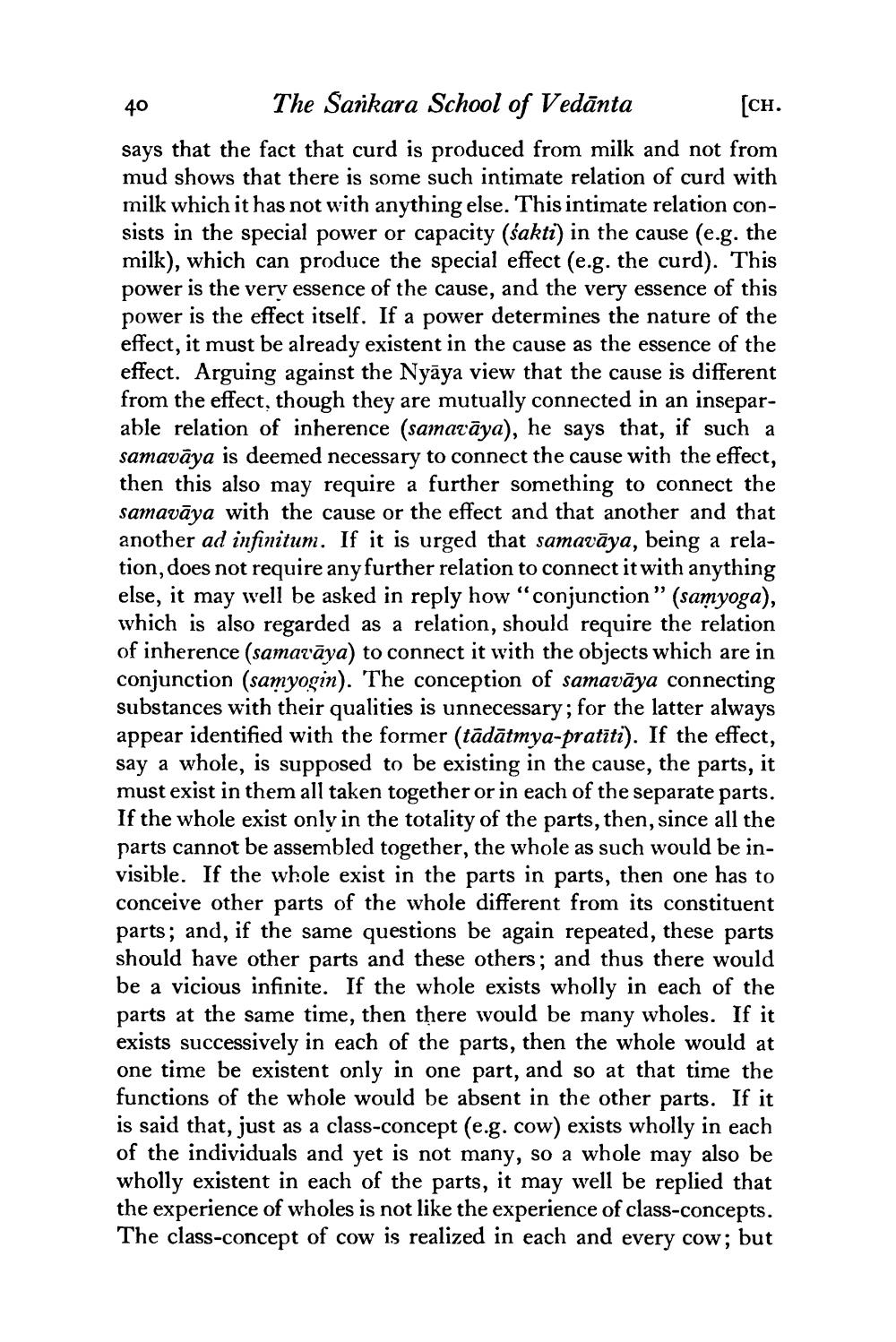________________
40
The Sankara School of Vedānta [ch. says that the fact that curd is produced from milk and not from mud shows that there is some such intimate relation of curd with milk which it has not with anything else. This intimate relation consists in the special power or capacity (sakti) in the cause (e.g. the milk), which can produce the special effect (e.g. the curd). This power is the very essence of the cause, and the very essence of this power is the effect itself. If a power determines the nature of the effect, it must be already existent in the cause as the essence of the effect. Arguing against the Nyāya view that the cause is different from the effect, though they are mutually connected in an inseparable relation of inherence (samatāya), he says that, if such a samavāya is deemed necessary to connect the cause with the effect then this also may require a further something to connect the samavāya with the cause or the effect and that another and that another ad infinitum. If it is urged that samavāya, being a relation, does not require any further relation to connect it with anything else, it may well be asked in reply how "conjunction " (samyoga), which is also regarded as a relation, should require the relation of inherence (samavāya) to connect it with the objects which are in conjunction (samyogin). The conception of samavāya connecting substances with their qualities is unnecessary; for the latter always appear identified with the former (tādātmya-pratīti). If the effect, say a whole, is supposed to be existing in the cause, the parts, it must exist in them all taken together or in each of the separate parts. If the whole exist only in the totality of the parts, then, since all the parts cannot be assembled together, the whole as such would be invisible. If the whole exist in the parts in parts, then one has to conceive other parts of the whole different from its constituent parts; and, if the same questions be again repeated, these parts should have other parts and these others, and thus there would be a vicious infinite. If the whole exists wholly in each of the parts at the same time, then there would be many wholes. If it exists successively in each of the parts, then the whole would at one time be existent only in one part, and so at that time the functions of the whole would be absent in the other parts. If it is said that, just as a class-concept (e.g. cow) exists wholly in each of the individuals and yet is not many, so a whole may also be wholly existent in each of the parts, it may well be replied that the experience of wholes is not like the experience of class-concepts. The class-concept of cow is realized in each and every cow; but




